#Sinosauropteryx prima
Text

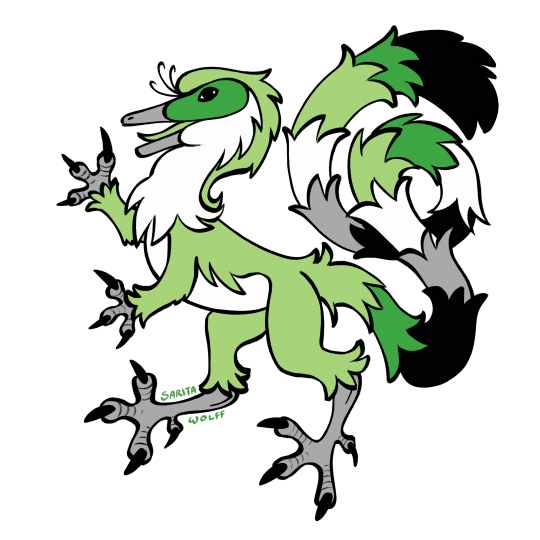

Pride dino #7: Aromantic Sinosauropteryx
—-
Oof, sorry this series is taking so long 😓 This has been a very busy year for me! Hopefully by next year I’ll be able to finish it. But for now… I guess I gotta prepare for Archovember once again…
#my art#SaritaDrawsPalaeo#Sinosauropteryx#Sinosauropteryx prima#aromantic#aromantic pride#aro pride#aro flag#aromantic flag#LGBTQIA+#LGBTQ+#LGBTQ#LGBT#LGBTQIA
320 notes
·
View notes
Text
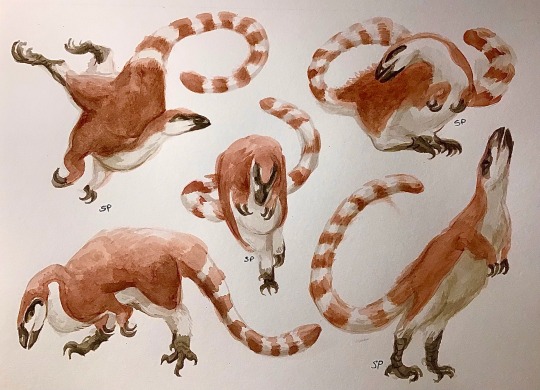
sinosauropteryx prima (watercolor, 2023)
#excuse the lack of specbio and belugirins lately :(#ive been very tired and busy#and hopefully I will get back to posting them soon#for now enjoy my favorite dinosaur#animals#dinosaurs#dinosaur#paleoart#sinosauropteryx#sinosauropteryx prima#kips art#art#earth#just little guys!!
259 notes
·
View notes
Photo
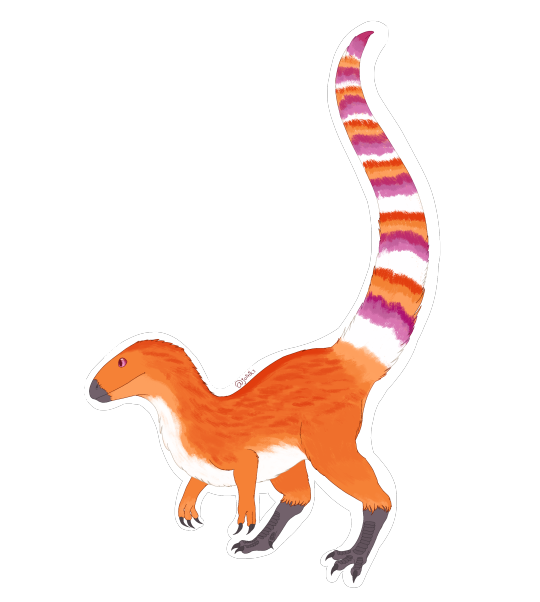
i straight up did not upload this? my bad
u can get her as a sticker or something else here <3
#me when i dont upload a 3+ month old piece 🤡#sinosauropteryx#sinosauropteryx prima#compsognathid#compsognathids#lgbt#lgbtq#lgbtq pride#lesbian#lesbian pride#dinosaur#dinosaurs#theropod#theropods#theropod dinosaur#theropoda#pride#my art
110 notes
·
View notes
Text
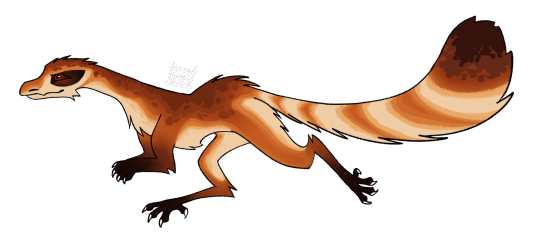
i'm back with a renewed passion for art so here's another drawing of my favourite little red panda chicken
+ bonus sketch under the cut because i still like the way it looks

#sinosauropteryx#sinosauropteryx prima#paleoart#paleontology art#paleontology#paleo#dinosaur art#dinosaurs#dinosaur#my art#my ramblings
15 notes
·
View notes
Photo
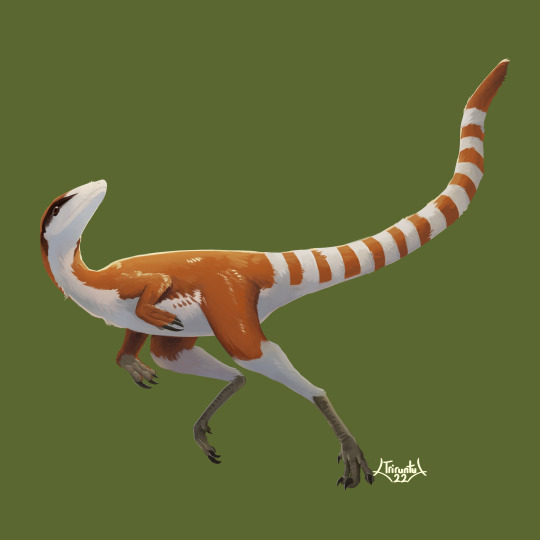
#477, a sinosauropteryx, specially requested.
Requests for birds are open, updates happen on Thursdays.
[project tag] | [kofi]
[commissions]
Find me on: [twitter]
210 notes
·
View notes
Text
I need you all to see what I just finished
A life sized crochet Sinosauropteryx prima complete with pico-feathering in as scientifically-accurate of a pattern and color as I possibly could. I had to read some literature to get it right but I think this is one of the best projects I've ever made. What do I name her? 2-L 7Up bottle for scale


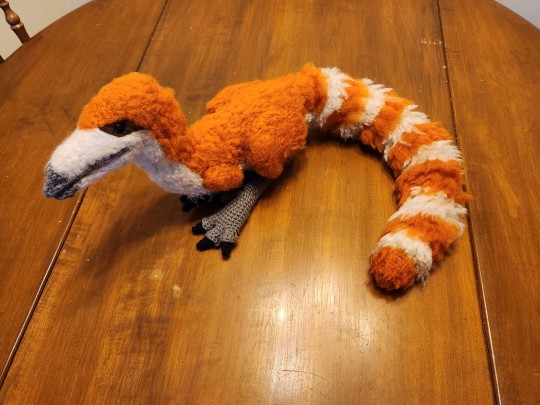
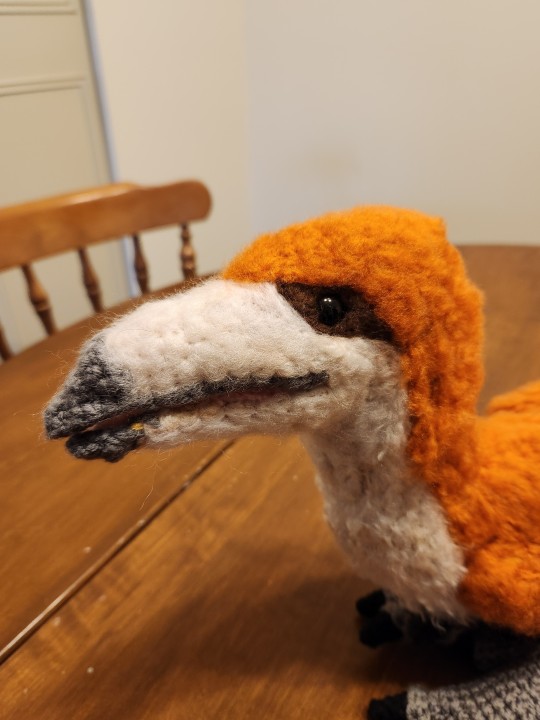



I've been working on her since September. The entire base was crocheted in this mustard I had a million skeins of. She didn't even use up one
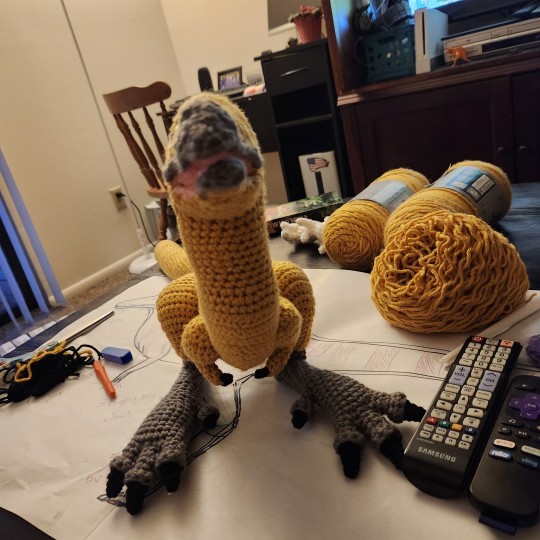

I love her so much she's gonna sit above my TV in the living room for now until we move and I can have a Designated Spot for her <3
Her mouth can open and close and I purposefully put her in a laying-down position so that she can lay on surfaces well. 4 toes on each foot and 3 fingers on each hand :)
4K notes
·
View notes
Text

Sinosauropteryx prima !!!
A little dinosaur from Yixian formation,known from few very well preserved fossils,that even allowed us to know its colors!
The fluffy creature was orange,had a white underside,black mask on the eyes,and a striped tail
636 notes
·
View notes
Text

"What is to come"
(image id is both in the alt text and below the read more- I put it under one because it's incredibly long)
And so there we have it, the 200+ followers artpiece that I have been working on for several days, if I had to guess I'd say it took 25 or so hours over eleven days. Honestly it's so surreal to me that I'm here with over 200 followers (260 as of typing this- yes, I procrastinated on this), especially when I only hit 100 followers in February. It's genuinely really nice to know that people are actually interested in my art (before anyone brings up spam bots- I know there are a few of them amongst my followers but I've checked most of them and I am 100% confident that over 200 of them are real). I don't really have much else to say really- I'm just grateful to have the support. Thanks y'all :).
[Image id: a large, lineless digital drawing of several dinosaurs. It is nighttime. At the bottom of the piece, a lone Eoraptor lunensis is walking across the floodplains- both the ground and the Eoraptor are just silhouettes, the early dinosaur has been given protofeathers. The full moon is shining, it's size is exaggerated for artistic affect. Behind the moon, the heads of sixteen different dinosaurs can be seen (listed left to right, bottom to top) Row 1- Thecodontosaurus antiquus (small sauropodomorph with light brown protofeathers, near-white undersides, straight stripes that are moderately darker than the base colour and vibrant green eyes), Coelophysis bauri (small early theropod with a long and narrow skull, its protofeathers are golden and black. A soft orange stripe runs across the back of its head, it has warm brown eyes. Row 2- Plateosaurus trossingensis (long-necked sauropodomorph, it has reddish-brown scales, light undersides, triangular stripes running down it's spine that get bigger the further down they get and pale yellow eyes), Heterodontosaurus tuckii (small ornithopod with a hooked grey beak. It has spiky green feathers, a lighter chest and a darker stripe running along its head and back, there are three small spots on its face, two behind the eye and one infront of it, it's eyes are bright yellow). Row 3- Megalosaurus bucklandii (medium-sized theropod with warm brown feathers, lighter undersides, dark spots and bright yellow eyes, there are several scars on its face), Brachiosaurus altithorax (greenish-grey true sauropod with lighter undersides, a dark pink patch on its throat, dark desaturated brown eyes and a few small scars on its neck), Archaeopteryx (early toothed bird with a black head, white neck and bright yellow eyes). Row 4- Hylaeosaurus armatus (pale brown ankylosaur with lighter undersides and vibrant green eyes), Velociraptor mongoliensis (dromaeosaur with light brown feathers, a lighter chest, a black stripe near its eye and light green eyes), Sinosauropteryx prima (small compsognathid theropod with ginger protofeathers, an off white mask and undersides and pale yellow eyes), Iguanodon bernissartensis (large greenish-grey ornithopod with a slightly darker back, pale undersides, a grey beak, and yellow eyes). Row 5- Matuku otagoense (heron with medium grey feathers and a small crest. A red stripe runs from just behind its nostrils to about a third of the way down its neck. Its undersides are white, its beak is grey and its eyes are brown), Triceratops prorsus (three-horned ceratopsian with grey-brown scales, lighter undersides, two triangular stripes between it's brow and nasal horns, reddish-orange diamond-like stripes on its frill, a hooked grey beak and golden eyes. Its brow horns curve forward at the base. Row 6- North Island brown kiwi (plump brown bird with a long pale beak, whiskers and black eyes, its nostrils are at the tip of its bill, and unlike the other dinosaurs in the sky part of its body below the neck is visible), male house sparrow (small redish-brown and grey bird with a black bib below it's bill), it has brown eyes and a dark grey bill. Row 7- rock dove (grey bird with iridescent green feathers scattered across its neck, a dark grey beak, and warm brown eyes). end id]
#art#my art#digital art#paleoart#dinosaurs#birds#eoraptor#thecodontosaurus#coelophysis#plateosaurus#megalosaurus#brachiosaurus#archaeopteryx#hylaeosaurus#velociraptor#sinosauropteryx#iguanodon#matuku#triceratops#north island brown kiwi#house sparrow#rock dove
68 notes
·
View notes
Photo

Happy 25th naming anniversary to one of my favorite, important little dinosaurs, Sinosauropteryx prima <3
799 notes
·
View notes
Text


Sinosauropteryx prima
Engage floof mode!
#illustration#paleoart#art#paleontology#paleo#sciart#artistsontumblr#digitalart#science#digitalillustration#sinosauropteryx#dinosaur#humanartist
322 notes
·
View notes
Note
do you have a favorite herbi and carni dinosaur? (specific genus or family group)
Favourite carnivorous dinosaur is easy, Sinosauropteryx prima!
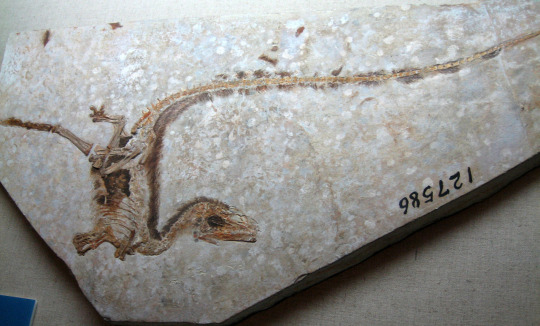
It's been my favourite dinosaur of all time for ages, because it represents such an incredible leap forward in our scientific understanding of dinosaurs! It was the first dinosaur described with fossilised feathers (that wasn't considered basically a bird already)!
If that wasn't enough, years later it's one of the only extinct dinosaurs whose colours are almost entirely known! It was an earthy red-brown, with white stripes on its tail and a black "bandit mask" on its face. So, basically an Early Cretaceous red panda.

(art by Gabriel Ugueto)
As for herbivorous dinosaurs, I don't really have a definitive favourite. There's such a huge variety of them, but personally I am always very fond of ceratopsians and sauropods, which I think are just absolutely beautiful creatures.
Out of the ceratopsians I love the chasmosaurini, with their enormous frills and horns and such, and am specifically very fond of Anchiceratops for its apparently weirdly long neck.

But there's a bunch of ceratopsians that I really love, like Pentaceratops, Einiosaurus, Zuniceratops, Udanoceratops, and Styracosaurus.
As for sauropods, the ones I love to see the most are titanosaurs because I find their long upward-sloping backs and necks especially graceful, and it amazes me that The Largest Animals ever walk on land also held themselves with such poise and elegance.

(Dreadnoughtus by Mark Witton)
One thing I notice going through my list of favourite dinosaurs, is how few of them I've actually drawn! Aside from Anchiceratops the art here isn't mine, and it's weird that I haven't drawn much of these guys who I find so beautiful to look at!
Also, feel free to add on to this with your own favourite dinosaurs! Can be carnivores, herbivores, omnivores, whatever!
252 notes
·
View notes
Text
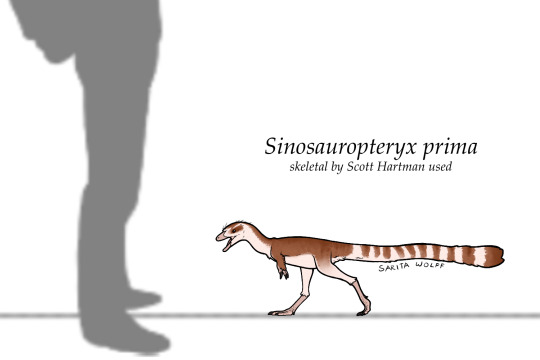
And the bonus Sinosauropteryx size chart!
#my art#SaritaDrawsPalaeo#Sinosauropteryx#Sinosauropteryx prima#Compsognathid#Theropod#dinosaurs#archosaurs#saurischians
83 notes
·
View notes
Text

my first batch of ko-fi rewards holographic stickers have arrived!! featuring Microraptor gui, Rhamphorhynchus muensteri, Elasmosaurus platyurus, and Sinosauropteryx prima!
subscribe to my ko-fi for $5 a month to get one of these each month!
#my art#artists on tumblr#digital art#paleo art#paleontology#dinosaur#dinosaur art#microraptor#elasmosaurus#sinosauropteryx#rhamphorhynchus#dino#stickers#sticker club#sticker design#holographic
29 notes
·
View notes
Text
It Came From The Wastebasket #12: Coelurosaur Confusion
Historically Coelurosauria was the counterpart to the Carnosauria, with both of them representing two major lineages of theropod dinosaurs.
Created as a group in the early 20th century, coelurosaurs quickly became a dumping ground for all small-bodied theropods – including coelophysoids, compsognathids, ornithomimids, oviraptorosaurs, dromaeosaurids, and troodontids– and for a while this wastebasket taxon also included the large-bodied ceratosaurids and tyrannosauroids, before they were moved over into the carnosaurs.
But during the 1960s and 1970s this arrangement began to break down. A better understanding of groups like dromaeosaurs revealed a confusing mixture of traditional "carnosaur" and "coelurosaur" anatomical features, and paleontologists struggled to figure out where these sorts of theropods actually fit in.
The development of cladistic methods from the 1970s onwards led to efforts to clean up the coelurosaur wastebasket, trying to figure out a more accurate version of these animals' evolutionary relationships. After briefly collapsing Coelurosauria down to just coelophysoids and "coelurids", the growing recognition of modern birds as living theropod dinosaurs eventually resulted in the group being properly redefined in the 1980s as "birds, and all theropods closer related to them than to carnosaurs".

Clockwise from the left (not to scale): Citipati osmolskae, Albertosaurus sarcophagus, Yi qi, Sinosauropteryx prima
The coelophysoids were finally removed entirely, reclassified as a much earlier branch of theropods – but quite a few of the other groups from earlier concepts of Coelurosauria survived this reshuffling, with the compsognathids, ornithomimids, oviraptorosaurs, dromaeosaurs, and troodontids all proving themselves to have really been closely related the whole time. Meanwhile the tyrannosauroids were brought back in, along with the therizinosaurs, alvarezsauroids, and a whole bunch of paravian and avialan lineages.
(Megaraptorans might belong somewhere in the coelurosaurs, too – possibly being tyrannosauroids – but their classification is currently being disputed.)
———
Nix Illustration | Tumblr | Twitter | Patreon
#it came from the wastebasket#wastebasket taxon#taxonomy#coelurosauria#theropod#dinosaur#paleontology#art#science illustration#paleoart#palaeoblr
231 notes
·
View notes
Text
New fossil brings us a step closer to unravelling the mystery of feather evolution
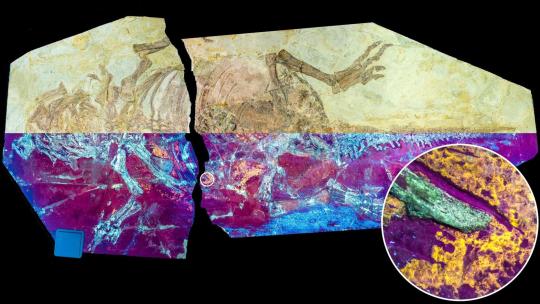
- By Zixiao Yang , Maria McNamara , University College Cork , The Conversation -
Strong but light, beautiful and precisely structured, feathers are the most complex skin appendage that ever evolved in vertebrates. Despite the fact humans have been playing with feathers since prehistory, there’s still a lot we don’t understand about them.
Our new study found that some of the first animals with feathers also had scaly skin like reptiles.
Following the debut of the first feathered dinosaur, Sinosauropteryx prima, in 1996, a surge of discoveries has painted an ever more interesting picture of feather evolution.
We now know that many dinosaurs and their flying cousins, the pterosaurs, had feathers. Feathers came in more shapes in the past – for example, ribbon-like feathers with expanded tips were found in dinosaurs and extinct birds but not in modern birds. Only some ancient feather types are inherited by birds today.
Paleobiologists have also learnt that early feathers were not made for flying. Fossils of early feathers had simple structures and sparse distributions on the body, so they may have been for display or tactile sensing. Pterosaur fossils suggest they may have played a role in thermoregulation and in colour patterning.
Fascinating as these fossils are, ancient plumage tells only part of the story of feather evolution. The rest of the action happened in the skin.
The skin of birds today is soft and evolved for the support, control, growth and pigmentation of feathers, unlike the scaly skin of reptiles.
Fossils of dinosaur skin are more common than you think. To date, however, only a handful of dinosaur skin fossils have been examined on a microscopic level. These studies, for example a 2018 study of four fossils with preserved skin, showed that the skin of early birds and their close dinosaur relatives (the coelurosaurs) was already very much like the skin of birds today. Bird-like skin evolved before bird-like dinosaurs came around.
So to understand how bird-like skin evolved, we need to study the dinosaurs that branched off earlier in the evolutionary tree.
Our study shows that at least some feathered dinosaurs still had scaly skin, like reptiles today. This evidence comes from a new specimen of Psittacosaurus, a horned dinosaur with bristle-like feathers on its tail. Psittacosaurus lived in the early Cretaceous period (about 130 million years ago), but its clan, the ornithischian dinosaurs, diverged from other dinosaurs much earlier, in the Triassic period (about 240 million years ago).
In the new specimen, the soft tissues are hidden to the naked eye. Under ultraviolet light, however, scaly skin reveals itself in an orange-yellow glow. The skin is preserved on the torso and limbs which are parts of the body that didn’t have feathers.
These luminous colours are from silica minerals that are responsible for preserving the fossil skin. During fossilisation, silica-rich fluids permeated the skin before it decayed, replicating the skin structure with incredible detail. Fine anatomical features are preserved, including the epidermis, skin cells and skin pigments called melanosomes.
The fossil skin cells have much in common with modern reptile skin cells. They share a similar cell size and shape and they both have fused cell boundaries – a feature known only in modern reptiles.
The distribution of the fossil skin pigment is identical to that in modern crocodile scales. The fossil skin, though, seems relatively thin by reptile standards. This suggests the fossil scales in Psittacosaurus were also similar in composition to reptile scales.
Reptile scales are hard and rigid because they are rich in a type of skin-building protein, the tough corneous beta proteins. In contrast, the soft skin of birds is made of a different protein type, the keratins, which are the key structural material in hair, nails, claws, hooves and our outer later of skin.
To provide physical protection, the thin, naked skin of Psittacosaurus must have been composed of tough reptile-style corneous beta proteins. Softer bird-style skin would have been too fragile without feathers for protection.
Collectively, the new fossil evidence indicates that Psittacosaurus had reptile-style skin in areas where it didn’t have feathers. The tail, which preserves feathers in some specimens, unfortunately did not preserve any feathers or skin in our specimen.
However, the tail feathers on other specimens show that some bird-like skin features must have already evolved to hold feathers in place. So our discovery suggests that early feathered animals had a mix of skin types, with bird-like skin only in feathered regions of the body, and the rest of the skin still scaly, like in modern reptiles.
This zoned development would have ensured that the skin protected the animal against abrasion, dehydration and pathogens.
What next?
The next knowledge gap for scientists to explore is the evolutionary transition from the reptile-style skin of Psittacosaurus to the skin of other more heavily feathered dinosaurs and early birds.
We also need more experiments studying the process of fossilisation itself. There is a lot we don’t understand about how soft tissues fossilise, which means it is difficult to tell which skin features in a fossil are real biological features and which are simply artefacts of fossilisation.
Over the last 30 years, the fossil record has surprised scientists in regard to feather evolution. Future discoveries of fossil feathers may help us understand how dinosaurs and their relatives evolved flight, warm-blooded metabolisms, and how they communicated with each other.
Zixiao Yang, Postdoctoral researcher, University College Cork and Maria McNamara, Professor, Palaeobiology, University College Cork
This article is republished from The Conversation under a Creative Commons license. Read the original article.
--
Header image: The studied Psittacosaurus under natural (upper half) and UV light (lower half). Credit: Zixiao Yang (author provided).
Read Also
Evolution: Primitive fish fossils reveal origins of teeth
2 notes
·
View notes
Text

hi it’s me again with the arknights dinosaurs. anyway, here’s my doc, Prima, in all of her sinosauropteryx “hasn’t slept since the end of the paleocene” glory
she’s VERY loosely based on sinosauropteryx. People think she’s a liberi because she’s got the tufts and if hellagur and archetto can be liberi, she can be too.
15 notes
·
View notes